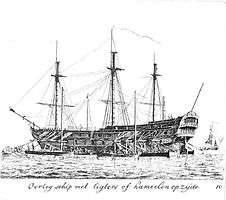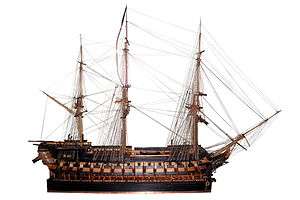Ship Camel

A Ship camel is an external floatation tank that can be fitted to a ship to increase her buoyancy or reduce her draught. Its inner walls are concave and curve as to espouse the lines of the hull of the ship. The ship camel is partially sunk using ballasts, installed on ship, and water is then pumped out. The increased volume provided by the camels allow for the system to float in a reduced draught.
History
The ship camel was invented in 1690 by Meeuwis Meindertsz Bakker to allow large ships of the line to cross shallow banks that isolated the harbour of Amsterdam from the open sea. In April, he tested the device with the large ship of the line Princess Maria, which was sailed over the shallow waters of Pampus in the Zuiderzee. The Admiralty of Amsterdam awarded a reward to Bakker for his invention.
The camel was mostly used in the Dutch Golden Age for accessing the shallow waters at Pampus, which were unreachable for large merchant ships. Instead of a real ship camel, sometimes light (sailing) ships were used to lift a ship. The merchant ship was raised from the middle and after that, if the direction of the wind was successful, the ship could sail on to Amsterdam. The difficulties of getting stuck in the Zuiderzee led, in the beginning of the 19th century to build a canal through Waterland (a Dutch region) and Marken. After failure of that project, the Noordhollandsch Kanaal was dug.
Ship camels were also used by the French Navy in the early 19th century with the ships Rivoli and Mont Saint-Bernard, allowing the construction of large 74-guns in Venice harbour.
Ship camels were also used on the barge Louqsor to facilitate her crossing of Bogaz.
| Examples of historical usage of seacamels | ||||||
|---|---|---|---|---|---|---|
|
See also
References
External links
| Wikimedia Commons has media related to Ship camels. |

